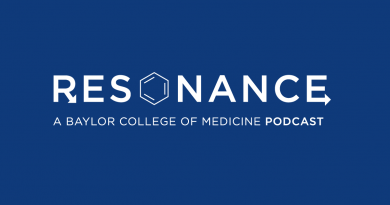Losing Darren
Identifying details here have been changed to protect patient privacy.

It wasn’t that the smile itself had an eerie quality—it was how the smile fell apart. His lips were appropriately retracted, and his beaming teeth sat neatly alongside and atop each other. But then Darren would escape his mind for a moment, tune in to a fearsome world, and the grin would drop like a guillotine.
I became familiar with this uneasy lurching between his vacant facial expressions and the inappropriate joy that he would at other times convey. Darren was a 21-year-old patient whom I met while rotating through Ben Taub’s Inpatient Psychiatry Unit as a third-year medical student. He was admitted involuntarily for a first episode of psychosis—a condition of the mind marked by delusions, hallucinations, disordered thoughts, cognitive impairments, and a general loss of contact with reality. He had first failed out of school and then quit work, withdrawing increasingly further into bizarre reveries. Darren’s mother finally called the police when her son declared that he was god, that she was the devil, and that it was time to exact vengeance.

As a student participating in Darren’s acute stabilization, I was presented with a graphic illustration of mental illness. Over the course of weeks, he walked our team through an arsenal of delusional superpowers: He could body-swap with a few seconds of intense concentration, cure diseases by pronouncing them cured, and even turn gay men straight if they desired his help. He was a divine being who had been sent to the hospital to help other patients with their actual illnesses. The hallucinations were equally peculiar, albeit less grand: At times Darren would stop mid-sentence and pleadingly wonder if we had heard the voice that only ever seemed to say one thing—“James Coney Island.”
We spent our days on the psychiatric ward carefully working through other elements that might have contributed to Darren’s clinical picture, ruling out causes like acute substance intoxication, endocrine disorders, infectious disease, or delirium. There was no history of physical trauma that might suggest an injury to the brain. His mother denied any family history that could indicate a genetic component to his presentation. This did not look like a disorder of mood or anxiety, both of which can sometimes lead to severe mental disorganization. The more we worked on the case, the clearer it became that we were dealing primarily with psychosis. We hadn’t observed Darren long enough to diagnose him with schizophrenia with certainty, but his condition began to feel like one that would not abate easily. We had arrived on the working hypothesis of a nonspecific psychotic disorder, but we were left with one additional piece of the history to consider: Darren smoked marijuana and smoked a lot of it.
He was a statistical outlier with his severity of use, having smoked daily since junior high. However, the scientific literature is rich with cases like his and with evidence pointing to a link between cannabis and psychosis. It’s easy to blame the new synthetic drugs (K2, Spice, etc.) for the startling “highs” that don’t resolve as they should, but natural cannabinoids have been the offending agents in most of these studies. Other influences moderate this association: family history, genetics, history of childhood abuse, and age at initiation have all been found to play a role. But all factors considered, exposure to cannabinoids in adolescence is thought to be intrinsically dangerous, suggesting a window of vulnerability where the brain is disrupted during a critical period of development and maturation.
Biology is the study of a complex synergy with poorly isolated variables, and there is only more gray when it comes to understanding the mechanisms that fashion our thoughts and behaviors. There may not be a single cause of disease as multi-faceted as schizophrenia, and we are still only beginning to understand the pathophysiology of psychosis. Furthermore, many long-term experiments to evaluate the psychiatric implications of chronic marijuana use in humans are neither ethical nor feasible to conduct. In spite of these hurdles, the existing body of scientific literature actually demonstrates that the relationship between cannabis and schizophrenia fulfills many but not all of the standard criteria for causality based on timing, dose-dependency, consistency, biological plausibility, and experimental coherence.
It may be valuable to think back to what we learned from tobacco in the 20th century. Nearly half of all adults smoked cigarettes in the 1960s, but many of these individuals would not develop lung cancer, and the same malignancies that were attributed to smoking would also occur independently of tobacco use. In 1964, the U.S. Surgeon General released a first-of-its-kind report on the adverse health outcomes due to smoking, and in the decades to follow, research has given way to one of the most well-known examples of causation in medicine. Fewer than 1 in 5 adults currently smoke cigarettes, but our nation’s history of tobacco use demonstrates that widespread convictions can drag behind scientific discovery.
Although many questions surrounding the health outcomes of today’s marijuana use remain unanswered, it is important to remember that other valuable lessons have already emerged. Cannabinoids have a fairly good safety profile, and various potential medical uses for them have been identified; however, these applications may at times be overstated. There is only moderate-quality evidence to support the use of cannabinoids for the treatment of chronic pain and spasticity, and the evidence is even poorer for benefit in nausea and vomiting due to chemotherapy, weight gain in HIV, sleep disorders, and Tourette syndrome. Moreover, researchers are confident that certain patterns of marijuana use can contribute to motor vehicle accidents, chronic bronchitis, addiction, and diminished lifetime achievement. Cannabinoids are reliably associated with short-term adverse events like drowsiness, poor balance, confusion, dizziness, disorientation, diarrhea, dry mouth, fatigue, hallucination, nausea, and vomiting. Notably, since retail stores in Colorado began marijuana sales to consumers in 2014, the University of Colorado Emergency Department in Denver has seen more patients showing up with marijuana intoxication and related illness, including children presenting with unintentional ingestion. While autonomy is fundamental to the ethical practice of medicine, individual responsibility and informed decision-making are also integral to public well-being.
Despite these concerning implications for both mental and physical health, at an approval rate of 58%, Americans are as in support of legal marijuana as they have ever been. The assent is not necessarily ill-advised: Improved access to the drug may indeed offer greater opportunities for clinical scientists to conduct critical experiments, even if research is still limited by federal designation of marijuana as a highly controlled, Schedule I drug. The criminalization of marijuana also places an immense strain on our justice system: Over half of America’s drug arrests involve marijuana, many of which involve possession charges only. These ideas merit reform, but it is also paramount that the polls reflect our nation’s awareness of the scientific and social obstacles posed by stubborn legislation, rather than a misplaced confidence in the safety of cannabis. There is just too little that we know, especially when it comes to marijuana and the brain.
Patients like Darren have a difficult road ahead. Schizophrenia is ranked among the top causes of disability in the world by measure of lost years of healthy life, and the contribution of psychiatric illness to the global burden of disease is only expected to grow. In many ways, we have been limited in our ability to fully understand the phenomenon of psychosis and how it comes about. With every day that goes by, however, we are learning more about a modifiable risk factor that may not be as harmless as widely perceived.
During my month at Ben Taub, it was easy for me to get lost in one patient’s alternate reality. I often felt an urge to pursue some bizarre comment and venture down the rabbit hole, in a naïve effort to unravel the etiology of it all. That intellectual curiosity took on a different meaning when our medical team set up a meeting with Darren’s family to describe treatment progress and his overall prognosis. Our words came and went, but the silence, the tears, and the despair of a mother trying to understand what had happened to her son were unforgettable.
At discharge, Darren adamantly denied that his drug use could have had anything to do with his mental breakdown and eagerly looked forward to smoking once more. His lips were appropriately retracted, and there again sat his beaming teeth, but it was a smile that I could not return. I shook his hand, said my goodbye, and wished him all the best.


